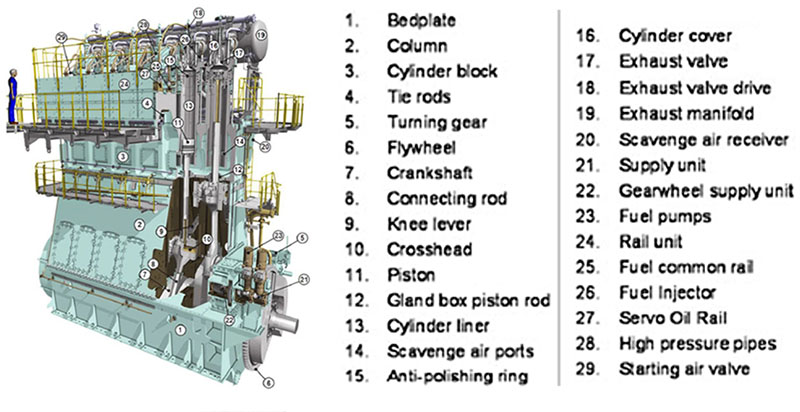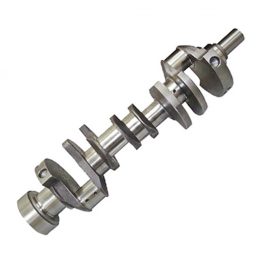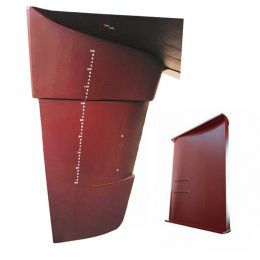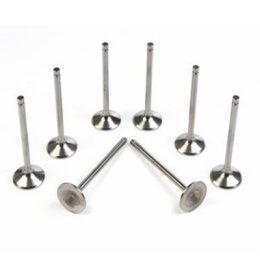
Marine Engine Connecting Rod
Marine Engine Connecting Rod
The marine engine connecting rod bearing is provided to transmit the firing force. It also convert the reciprocating motion into rotatory motion together with the crankshaft.
Connecting Rod Material
- Older Engine – Plain Carbon Steel
- New Engine – Drop Forged High Tensile Steel
How Does a Marine Engine Connecting Rod Work?
The connecting rod is an essential component of the engine’s power transfer process. During the combustion process, the fuel-air mixture ignites, creating pressure that drives the piston downward. The connecting rod transfers the piston’s motion to the crankshaft, which converts the linear motion into rotational motion.
The connecting rod’s design must be precise, and it must be made from durable materials to ensure it can withstand the significant forces it experiences during the engine’s operation.
Maintenance and Care of Marine Engine Connecting Rods
Proper maintenance and care of your marine engine connecting rods are crucial to ensure optimal engine performance and longevity. Here are some tips to help you keep your connecting rods in good condition:
- Check the Connecting Rod Bolts: The connecting rod bolts must be tightened to the manufacturer’s recommended torque specification. Loose bolts can cause the connecting rod to fail, which can cause significant damage to the engine.
- Inspect for Cracks: Inspect your connecting rods regularly for cracks, as they can lead to catastrophic engine failure. If you find any cracks, replace the connecting rod immediately.
- Regular Oil Changes: Regular oil changes are essential for the health of your engine, and they can also help prolong the life of your connecting rods. Old, dirty oil can cause excessive wear on your connecting rods, leading to premature failure.
- Use High-Quality Parts: When replacing your connecting rods, always use high-quality, OEM parts. Cheap, low-quality parts may save you money upfront, but they can cause significant damage to your engine in the long run.
When to Replace Your Connecting Rods
Marine engine connecting rods are designed to last a long time, but they will eventually wear out and need to be replaced. Here are some signs that it’s time to replace your connecting rods:
- Knocking Noise: A knocking noise from your engine is a sure sign that something is wrong. If the noise is coming from the bottom of the engine, it could be a sign that your connecting rods are failing.
- Excessive Vibration: If your engine is vibrating excessively, it could be a sign that your connecting rods are out of balance or have worn out.
- Low Oil Pressure: Low oil pressure can be caused by a variety of issues, including worn-out connecting rods. If you notice a sudden drop in oil pressure, have your engine inspected immediately.
Marine Engine Connecting Rod Parts:

Engine Connecting Rod Brands

We offer the Brands and Spear parts:
|
SULZER:
|
||||
| RD68 | RND76 | RND76M | RND90 | RND90M |
| ZL40/48 | RTA62 | RND68M | RTA84 | 16ZAV40S |
| RLA90 | RTA72 | RTA84M | RTA84C | RND68 |
| RTA52 | RTA58 | RTA76 | RLB90 | RTA48(T) |
| RTA38 | RTA76 | RTA96 | RLA(B)56 | RLA(B)66 |
| RLA(B)76 | RF44 | RF56 | TAD36 | TAD48 |
|
MAN:
|
||||
| 40/54A | 52/90N | 57/80C | KZ57/80F | |
| KSZ70/125 | KSZ78/155 | 90/160A | 52/55 | |
| L58/64 | 90/190CL | 60/105E | 70/120E | |
| 70/125CL | KSZ78/155A | KSZ70/125BL | 52/55A, 40/45 | |
|
B&W:
|
||||
| L35MC | L60MC | L80MC | L55GF | L55GFCA |
| L80GFCA | L80GB | 74VT2BF | K62EF | K74EF |
| K84EF | K45GFC | K67GF | K80GF | K90GF |
| S45HU | L70MC | L50MCE | S60MC | S70MCE |
| K80MC | S80MC | K90MC-C | L67GFCA | L90GBE |
| K45GF | L45GF | L67GF | L80GF | L90GF |
| S35MC | L42NC | S42NC | L50MC | S60MC |
| L70MC | L80MC | L90MC | S90MC | 50VT2BF |
| 62VT2BF | K84EF | |||
|
MITSUBISHI:
|
|||
| UEC37L/LA/LS | UEC45HA | UEC60L/LA/LS | |
| UEC45L/LA/LS | UET45/75C | UEC52/125H | |
| UEC52L/LA/LS | UET45/80D | UEC52/90D | |
| UEC(T)52/105D | UEC45/115H | UEC37/88H | UEC37H |
|
PIELSTICK:
|
||||
| PA6 | PC3 | PC2-2 | IHI PC2-5 | PC4 |
| PC2-6 | PC4-2L | PC4-570 | PA5 | |
|
AKASAKA:
|
||||
| UET45/80D | UEC52/105D | DM51SS | UEC 60/150H | UEC 60HA |
| A31 | A34 | A37 | A41 | AH27 |
| AH28 | AH30 | AH36 | AH38 | AH40 |
| DM30 | DM36 | DM38 | DM46 | DM47 |
|
DEUTZ:
|
||||
| RBV8M358 | RBV8M540 | RBV16M640 | TBD620L6 | |
| BVM350 | BVM540 | BF6M716 | ||
|
HANSHIN:
|
||||
| EL30 | EL32 | EL35 | EL40 | EL44 |
| LH28RG | LH31G | LU28(A,R,G) | LU32 | LU35 |
| LU38 | LU46(A) | LU50 | LU54 | LUN28 |
| LUN30 | LUD32 | LUD35 | LUS38 | |
|
NIIGATA:
|
|||
| MG40X(EX) | M34X | 6M28BFT | M31X |
|
MAK:
|
||||
| M332 | M453AK | MU551AK | MU552AK | M601 |
| MU452AK | 451AK | 6M453AK | 9M453C | 6M601C |
| 8M601 | ||||
|
WARTSILA:
|
||||
| 22 | 32 | 31 | 26 | 20 |
| S28 | 38 | 46 | 32GD | 46GD |
| 14TK | R22HF | R-V32 | NOHAB | |
|
DAIHATSU:
|
||||
| PS-18 | PS-22 | PS-20 | PS-26 | PS-30 |
| PKT-14 | PKT-16 | PKTD-16 | DS-18 | DS-22 |
| DS-26 | DS- 28 | DS-32 | DL-14 | DL-16 |
| DL-19 | DL-20 | DL-22 | DL-24 | DL-26 |
| DK-20 | PL-24 | |||
|
CUMMINS:
|
||||
| 4BT3.9 | 6BT(A)5.9 | 6CT8.3 | NT(A)855 | N14 |
| KTA19 | KTA38 | KTA50 | QSK19 | QSM11 |
|
CATERPILLAR:
|
||||
| 3054 | 3056 | 3066 | 3106 | 3126 |
| 3306 | 3406 | 3408 | 3412 | 3508 |
| 3512 | 3516 | 3606 | 3608 | 3612 |
| 3616 | 3618 | C1.5 | C2.2 | C7 |
| C9 | C10 | C12 | C15 | C16 |
| C18 | C30 | C32 | ||
|
SCANIA:
|
||||
| DI 09 | DI 13 | DI 16 | ||



